A History of Forced and Coerced Sterilization among Indigenous Peoples
The egregious practice of legalized and non-legalized Forced and Coerced Sterilization (FCS) has been perpetrated against Indigenous Peoples in Canada in both historical and modern times. FCS refers to any form of sexual sterilization without free, informed, or voluntary consent. The practice of FCS has roots in racism, colonialism, and eugenics. (Stote 2012; Leason 2021; Clarke 2021)
Colonial ideologies, policies, and structures reflected deeply engrained racism by targeting Indigenous Peoples and considering them culturally and racially inferior (Grekul, Krahn, and Odynak 2004; Stote 2012; McLaren 1990). The emergence of eugenics was informed by racism and perpetuated by colonial governmental bodies (Grekul, Krahn, and Odynak 2004; Stote 2012; McLaren 1990). Eugenics, a term coined by Sir Francis Galton in 1883, refers to beliefs or practices which aim to “improve” the genetic quality of human populations through selective breeding (Grekul, Krahn, and Odynak 2004; Stote 2012; McLaren 1990). This ideology assumes that undesirable characteristics such as disabilities, mental illness, alcoholism, poverty, and poor moral behaviour are hereditary, and therefore could be reduced by limiting the reproductive power of populations who exhibit these traits (Stote 2012; Clarke 2021). There were two dominant forms of eugenics: positive and negative. Positive eugenics encouraged the procreation of populations viewed as having desirable characteristics through financial incentives, whereas negative eugenics discouraged the procreation of populations viewed as having undesirable characteristics through sterilization (Grekul, Krahn, and Odynak 2004).
The effects of FCS are devastating and cannot be overstated. However, there is little evidence detailing the profound impact of this practice on Indigenous people in Canada (Government of Canada 2013). The repercussions of FCS extend to every facet of life, including physical, emotional, social, and cultural traumas. Survivors recount not only enduring the physical trauma of FCS but also grappling with profound bodily changes such as early menopause as a result (Government of Canada 2013). They also report experiencing overwhelming pain, fear, shame, anxiety, depression, and suicidal thoughts. The aftermath of trauma stemming from FCS is a deep-seated distrust of the healthcare system among Indigenous people, which can further contribute to pervasive health inequities (Government of Canada 2013; Stote 2012) Beyond the individual, FCS can hinder relationships within families, communities, and cultures. The inability to conceive has impacted current and future intimate relationships between survivors and their partners (Government of Canada 2013). It also affects bonding between parent and child (Government of Canada 2013). Moreover, FCS strikes at the vital links between an individual, their community and culture. Indigenous communities are based on a matriarchal structure and represent crucial pillars of support (Government of Canada 2013). However, the inability to conceive not only diminishes the available community support systems such as connections with revered Elders, but also symbolizes the deliberate erasure of Indigenous lineages through forced genocide (Government of Canada 2013). As such, the consequences of FCS extend throughout generations and perpetuate a legacy of unimaginable pain and cultural loss.
The practice of FCS among Indigenous Peoples in Canada represents a grave violation of human rights, rooted in historical injustices, and perpetuated by contemporary healthcare inequities. To address this important issue, urgent and comprehensive reforms are required. These reforms can include imposing criminal penalties on perpetrators, mandating training on Indigenous rights for healthcare professionals, and empowering Indigenous people.
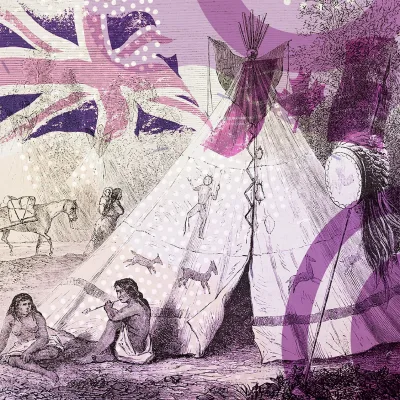
1755
The Creation of the Indian Department
- British officials created the Indian Department.
- The Indian Department managed affairs between the colonial government and Indigenous Peoples in Canada.
- The responsibility was later transferred from the Crown to the Canadian Government.
- Currently there are two governmental departments which oversee the affairs of Indigenous Peoples: Indigenous Services Canada and Crown-Indigenous Relations and Northern Affairs Canada.

1876 - Present
The Indian Act
- The Indian Act aimed to control and assimilate Indigenous peoples but did not include Métis or Inuit.
- The Indian Act authorized the federal government to regulate and administer the lives of Indigenous people.
- This act included some the following clauses:
- Replaced the traditional structures of Indigenous self-government.
- Created a legal distinction between “status and non-status Indians.”
- Made religious and cultural ceremonies and traditions of Indigenous peoples illegal.
Source: The Canadian Encyclopedia. “Indian Act,” February 7, 2006. Accessed January 02, 2024.
1883
Emergence of Eugenics
- The introduction of the term “eugenics” by Sir Francis Galton.
- “The study of the agencies under social control that may improve the racial qualities of future generations, either physically or mentally.”
- There are many forms of Eugenics.
- Positive Eugenics: The encouragement of procreation among individuals or groups viewed as having desirable characteristics. Methods of positive eugenics can include financial incentives.
- Negative Eugenics: The discouragement of procreation of individuals or groups who are viewed as having undesirable characteristics. Methods of negative eugenics include institutionalization or sexual sterilization.
Sources: The Canadian Encyclopedia. “Eugenics in Canada,” February 7, 2006.
McLaren, Angus. Our Own Master Race; Eugenics in Canada, 1885-1945. University of Toronto Press 1990. Our Own Master Race: Eugenics in Canada, 1885-1945 on JSTOR.
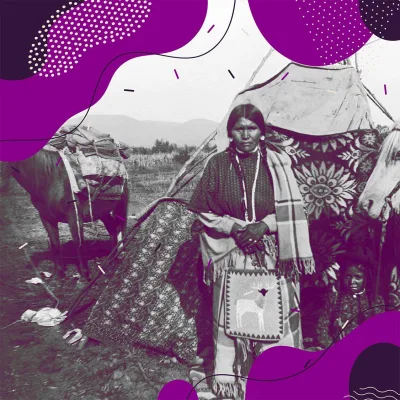
1918
The “Indian Problem”
- The introduction of the term the “Indian Problem” by Duncan Campbell Scott, the deputy superintendent of the Department of Indian Affairs.
Duncan Campbell Scott was quoted as saying. “I want to get rid of the Indian problem. I do not think as a matter of fact, that the country ought to continuously protect a class of people who are able to stand alone… Our objective is to continue until there is not a single Indian in Canada that has not been absorbed into the body politic and there is no Indian question, and no Indian Department.”
Source: The Canadian Encyclopedia. “Racial Segregation of Indigenous Peoples in Canada,” May 1, 2021. Accessed January 02, 2024. Racial Segregation of Indigenous Peoples in Canada | The Canadian Encyclopedia
1919
Introduction of Eugenic Theories in Canada
W.L Lochhead introduced the readers of the Canadian Bookman to the science of genetics meant to improve human reproduction.
Source: McLaren, Angus. Our Own Master Race; Eugenics in Canada, 1885-1945. University of Toronto Press 1990. Our Own Master Race: Eugenics in Canada, 1885-1945 on JSTOR.
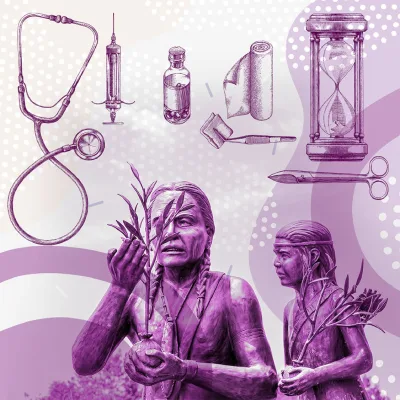
1920 - 1980
Racially Segregated Healthcare
- Indigenous people were subject to racial segregation in community hospitals.
- The outbreak of “Indian Tuberculosis” prompted the creation of Indian Hospitals, which provided isolating and degrading care and did not prioritize the health of Indigenous peoples.
- Indian Hospitals were chronically underfunded, lacking properly trained healthcare workers and the necessary resources.
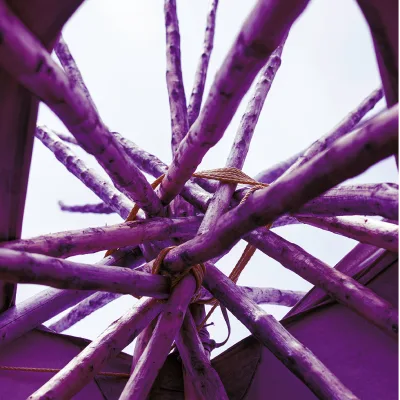
1928
Indigenous Peoples Classified as “Mentally Unfit”
- Indigenous Peoples were classified as “mentally unfit” in Canada.
- This classification was often the first step to sterilization, which was legalized in certain provinces within Canada.
1928 - 1972
Alberta Sexual Sterilization Act
- This act legalized the policing and criminalization of Indigenous women’s sexuality.
- The Alberta Sexual Sterilization Act established a Eugenics board which had the power to authorize the sterilization of individuals who had been institutionalised.
- Throughout 1928-1972, there were 2,834 sterilizations performed, with Indigenous women representing six to eight per cent of this overall figure.
- Between the years 1969 to 1972, Indigenous women represented 25 per cent of the sterilizations performed.
- In 1937, an amendment to the Alberta Sexual Sterilization Act dictated that consent was no longer required for sterilizations.
Source: The Canadian Encyclopedia. “Sterilization of Indigenous Women in Canada,” April 17, 2019. Accessed on January 02, 2024.https://www.thecanadianencyclo... Grekul, Jana. “Sterilization in Alberta, 1928 to 1972: Gender Matters*.” Canadian Review of Sociology/Revue Canadienne De Sociologie 45, no. 3 (August 1, 2008): 247–66. https://doi.org/10.1111/j.1755-618x.2008.00014.x. Clarke, Erin. 2021. "Indigenous Women and the Risk of Reproductive Healthcare: Forced Sterilization, Genocide, and Contemporary Population Control." Journal of human rights and social work 6 (2): 144-147. https://doi.org/10.1007/s41134-020-00139-9.
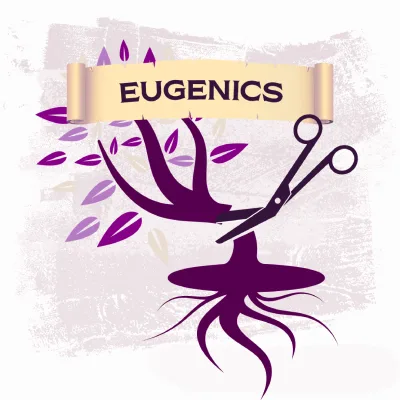
1933 - 1973
British Columbia Sterilization Act
- This act established a provincial Eugenics Board that authorized the legal sterilization of individuals discharged from provincial institutions if they were believed to have children with a high tendency to have mental disease or deficiency.
Although records of sterilizations performed under this act were destroyed or lost, it is estimated that approximately 200 to 400 individuals were sterilized. Indigenous people were among this figure.
Source: The Canadian Encyclopedia. “Sterilization of Indigenous Women in Canada,” April 17, 2019. Accessed on January 02, 2024.https://www.thecanadianencyclo....

1928 - 1973
Consent for Sterilization
Consent for sterilization was only obtained in 17 per cent of cases for Indigenous peoples, as more than 77 per cent were considered “mentally defective” and therefore their consent was not required.
Source: Grekul, Jana, Arvey Krahn, and Dave Odynak. “Sterilizing the ‘Feeble‐minded’: Eugenics in Alberta, Canada, 1929–1972.” Sociology Lens 17, no. 4 (December 2004): 358–84. https://doi.org/10.1111/j.1467-6443.2004.00237.x.
1930
Lobbying for Medical Act Amendment
Doctors lobbied for the amendment to the Medical Act, to protect those who performed sterilization (a widespread provincial practice) from any legal action.
Source: Stote, Karen. “The Coercive Sterilization of Aboriginal Women in Canada.” American Indian Culture and Research Journal 36, no. 3 (January 1, 2012): 117–50. https://doi.org/10.17953/aicr.36.3.7280728r6479j650.McConnachie, “Science and Ideology,” 236-37.
1930 - 1935
Non-legal Sterilizations
- It is important to note that sterilizations were being performed by eugenically minded doctors in Ontario, in the absence of legalisation.
- A. R. Kaufman was a rubber magnate who advocated for sterilization and facilitated more than 1400 sterilizations, on both males (1000) and females (400).
- However, the extent of these sterilizations on Indigenous peoples is not fully known.
Source: Stote, Karen. “The Coercive Sterilization of Aboriginal Women in Canada.” American Indian Culture and Research Journal 36, no. 3 (January 1, 2012): 117–50. https://doi.org/10.17953/aicr.36.3.7280728r6479j650.McConnachie, “Science and Ideology,” 236-37.

1937
Department of Indian Affairs and Consent
- The Department of Indian Affairs suggests that efforts should be made to obtain consent, if possible, prior to sterilization.
- This suggestion was made in order to protect the government from any liability and dismiss the notion that there was a conspiracy to commit genocide through the means of forced sterilization.
Source: Correspondence between the Department of Indian Affairs and the Eugenics Board (Eugenics Board meeting no. 83, May 31, 1937) cited in Grekul, “The Social Construction of the Feebleminded Threat,” 156.

1951 - 1980
The Sixties Scoop
- Amendments to the Indian Act in 1951 gave provinces jurisdiction over Section 88 (Indigenous Child Welfare) which allowed Indigenous children to be taken from their families, without the consent of their family or the band.
- These amendments resulted in an overrepresentation of Indigenous children in the child welfare system.
- This was an extension of racist policies meant to assimilate Indigenous Peoples.
Source: The Canadian Encyclopedia. “Sixties Scoop,” June 22, 2016. Accessed on January 2, 2024. https://www.thecanadianencyclo....
1960 -Present
Forced Birth Evacuations
- The practice of forced birth evacuation of Indigenous women often termed “maternal evacuation” forces Indigenous women to leave their community during their final trimester to travel to regional or southern hospitals to give birth.
- Away from their home, families and supports, there is often not sufficient information or resources given to these women about their sexual and reproductive rights.
Source: Silver, Hilah, Iván Sarmiento, Juan Pimentel, Richard Budgell, Anne Cockcroft, Zoua M. Vang, and Neil Andersson. “Childbirth Evacuation among Rural and Remote Indigenous Communities in Canada: A Scoping Review.” Women and Birth 35, no. 1 (February 1, 2022): 11–22. https://doi.org/10.1016/j.womb....
1966 - 1976
Sterilizations of Indigenous Peoples
- More than 1200 sterilizations were performed. This figure was comprised of 1150 Indigenous women and 50 Indigenous men or those of undocumented sex.
- More than 70 sterilizations were performed on Indigenous women in Nunavut.
Source: Leason, Jennifer. “Forced and Coerced Sterilization of Indigenous Women.” Canadian Family Physician 67, no. 7 (July 1, 2021): 525–27. https://doi.org/10.46747/cfp.6707525.

1970
Allegations of Sterilizations
Member of Parliament David Lewis alleged that the Department of Health was facilitating the Forced and Coerced Sterilization of Indigenous women.
Source: The Canadian Encyclopedia. “Sterilization of Indigenous Women in Canada,” April 17, 2019. https://www.thecanadianencyclo....
1973
Allegations of Sterilizations
- The Canadian Broadcasting Corporation aired a story on their public affairs program “Weekend” which alluded to there being a calculated attempt to decrease the birth rate among Indigenous Peoples within Northern Canada.
- This program suggested that Inuit women were experiencing Forced and Coerced Sterilization and that Inuit children were separated from their families.
Source: Eayrs, J, “Sterilization of Eskimos,” April 1, 1973 (Canadian Broadcasting Corporation, NWT), Transcript, RG 29, LAC.
1976
Allegations of Sterilizations
- Robert Lechat writes a series of articles alleging that the Federal Government was intensifying the Forced and Coerced Sterilization of Indigenous Peoples in the north of Canada.
- These articles claimed that Forced and Coerced Sterilization occurred in six communities in the Keewatin District between January 1966 to October 1976.
- A large proportion of Indigenous women were sterilized: in Repulse Bay, 45 per cent of women (10 women), 26 per cent of women (6 women) in Chesterfield Inlet, 27 per cent of women (5 women) in Pelly Bay, and 31 per cent of women (13 women) in Gjoa Haven.
Source: Stote, Karen. “The Coercive Sterilization of Aboriginal Women in Canada.” American Indian Culture and Research Journal 36, no. 3 (January 1, 2012): 117–50. https://doi.org/10.17953/aicr.36.3.7280728r6479j650
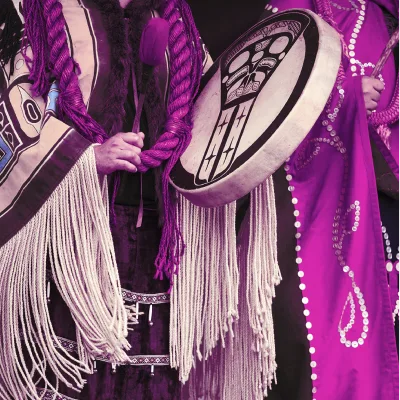
1976
Parliamentary Inquiry
- A parliamentary inquiry was conducted attempting to determine the number of sterilizations in northern Canada between January 1966 and October 1976.
- This inquiry found that there were 70 Indigenous women sterilized during this time period. This estimate was lower than other estimates.
- However, it is important to note that this inquiry was centered on a small geographical area and resulted in lower estimates than other sources.
Source: Stote, Karen. “The Coercive Sterilization of Aboriginal Women in Canada.” American Indian Culture and Research Journal 36, no. 3 (January 1, 2012): 117–50. https://doi.org/10.17953/aicr.36.3.7280728r6479j650
1970- 1973
Sterilization of Indigenous women in Northern Settlements
- There were 180 Indigenous women who were sterilized in northern settlements between 1970-1973.
- These sterilizations occurred in Baker Lake (15 women), Bathurst Island (2), Belcher Islands (3), Broughton Islands (4), Cambridge Bay (13), Arctic Bay (6), Cape Dorset (6), Chesterfield Inlet (10), Clyde River (4), Coral Harbour (7), Eskimo Point (2), Fort Liard (1), Frobisher Bay (16), Gjoa Haven (11), Grise Fiord (1), Hall Beach (8), Homan Island (6), Iglookik (8), Inuvik (3), Lake Harbour (4), Pelly Bay (8), Coppermine (21), Pond Inlet (4), Pangnirtung (4), Rankin Inlet (26), Repulse Bay (10), Resolute Bay (4), Sachs Harbour (1), Spence Bay (9), Somerset Isle (1), Whale Cove (4), Yellowknife (1), Portage La Prairie Mental Home (1).
Source: Stote, Karen. “The Coercive Sterilization of Aboriginal Women in Canada.” American Indian Culture and Research Journal 36, no. 3 (January 1, 2012): 117–50. https://doi.org/10.17953/aicr.36.3.7280728r6479j650

1970- 1975
Sterilization of Indigenous Women
- There was a total of 344 sterilizations performed on Indigenous women during this time period.
- These sterilizations occurred in four different zones: there were 30 sterilizations in the Inuvik Zone, 117 in the Baffin Zone, 112 in the Mackenzie Zone and 85 in the Keewatin Zone.
- There was a lack of accounting measures used by Medical Services to keep track of these sterilizations. As such, the likelihood that there were more procedures taking place than reported by the Medical Services is high.
Source: Stote, Karen. “The Coercive Sterilization of Aboriginal Women in Canada.” American Indian Culture and Research Journal 36, no. 3 (January 1, 2012): 117–50. https://doi.org/10.17953/aicr.36.3.7280728r6479j650.

1970- 1975
Sterilization of Indigenous Men
- There were 122 vasectomies performed on Indigenous men in the Northwest Territories during this time period.
- These were performed in Frobisher Bay, Inuvik, Hay River, Yellowknife, Pine Point, Fort Providence, Fort Simpson and Fort Smith.
- There was a lack of accounting measures used by Medical Services to keep track of these sterilizations. As such, the likelihood that there were more procedures taking place than reported by the Medical Services is high.
Source: Stote, Karen. “The Coercive Sterilization of Aboriginal Women in Canada.” American Indian Culture and Research Journal 36, no. 3 (January 1, 2012): 117–50. https://doi.org/10.17953/aicr.36.3.7280728r6479j650.
1971- 1974
Hospital Sterilizations
- There were 580 sterilizations performed between 1971-1974 in hospitals run by the Department of National Health and Welfare.
- Indigenous women accounted for 551 of the performed sterilizations.
- These sterilizations occurred in Moose Factory Ontario (147), Sioux Lookout Ontario (61), Norway House Manitoba (54), Percy E. Moore Manitoba (16), Blood Alberta (2), Charles Camsell Alberta (125), Frobisher Bay Northwest Territories (78), Inuvik Northwest Territories (37), Whitehorse Yukon (26), Fort Qu’Appelle (14), and North Battleford Saskatchewan (20).
Source: Stote, Karen. “The Coercive Sterilization of Aboriginal Women in Canada.” American Indian Culture and Research Journal 36, no. 3 (January 1, 2012): 117–50. https://doi.org/10.17953/aicr.36.3.7280728r6479j650.
1969 June
The White Paper
- The White Paper was proposed by Jean Chrétien (Minister of Indian Affairs and Northern Development) and Pierre Elliott Trudeau (Prime Minister) in 1969.
- This governmental policy aimed to assimilate Indigenous Peoples under the Canadian state, however, it failed to appropriately address prior concerns raised by Indigenous Peoples and absolved the government of historical promises and responsibilities to the Indigenous peoples.
- This act proposed the following changes:
- The elimination of the distinct legalized status (Indian status).
- Abolishment of the prior overarching Indian Act.
- Transferring oversight of Indigenous related affairs from the federal to the provincial government.
- Appointment of a commissioner to resolve any existing land claims and terminate existing treaties.
- Conversion of reserve land into private property so it could be sold by each Indigenous band.
- Providing funding for economic development.
Source: “The White Paper - British Columbia - An Untold History,” n.d. https://bcanuntoldhistory.knowledge.ca/1960/the-white-paper.
1969 Dec 21
Omnibus Criminal Reform Bill
- In 1869, there was a law passed in Canada which made abortion illegal.
- In 1892, the distribution and sale of contraceptive products was criminalized.
- In 1969, a legislation was passed, which decriminalized the distribution of information on contraception and the use of contraception, allowing Canadians to prevent pregnancy without penalty. This same legislation also decriminalized abortions under restrictive conditions (only if the pregnancy might endanger a women’s health).
Source: The Canadian Encyclopedia. “History of Birth Control in Canada,” February 1, 2021. Accessed on January 02, 2024. https://www.thecanadianencyclopedia.ca/en/article/history-of-birth-control-in-canada. Canadian Centre for Bio-Ethical Reform. “History of Abortion Law in Canada - Canadian Centre for Bio-Ethical Reform,” January 29, 2020. https://www.endthekilling.ca/c....
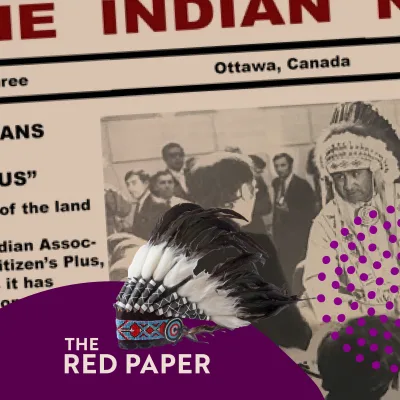
1970
The Red Paper
- This paper also named the “Citizen’s Report” was developed by Harold Cardinal and the Indian Association of Alberta in response to the White Paper.
- This report stated that it was essential to preserve the lands, rights, status, and traditions of Indigenous Peoples. It also requested the following:
- Federal authorities to provide an admission regarding past mistakes.
- To not repeal the Indian Act, which would allow Indigenous Peoples greater self-government.
- Recognition of historical treaties, and a pledge to embed revised treaties.
- Revising the federal Indian Affairs branch to be smaller and in tune with the needs of the community with the immediate appointment of a full-time Minister of Indian Affairs.
- Funding for education be directed to the councils, which could then operate their own schooling with updated curriculums.
- Funding should not be only provided by the government, but private sector could also be enlisted.
- Establishment of a commission, with consultation with Indigenous peoples, which could address land claims.
Source: The Canadian Encyclopedia. “Citizens Plus (The Red Paper),” March 16, 2023. Accessed on January 2, 2024.https://www.thecanadianencyclo....
1973
Statement by Deputy Minister of Medical Services
M.L Webb made a statement which recognized that the Department of Medical Services did not have population figures for northern areas of Canada. This was because there were no statistics which existed for many hospitals in the Northern Territories and provinces, to compare with the sterilization rates.
Source: Stote, Karen. “The Coercive Sterilization of Aboriginal Women in Canada.” American Indian Culture and Research Journal 36, no. 3 (January 1, 2012): 117–50. https://doi.org/10.17953/aicr.36.3.7280728r6479j650.
1977
Request for Information Disclosure
Wally Firth requested that the government release the number of vasectomies performed on Indigenous men in the Northwest Territories since 1970.
Source: Stote, Karen. “The Coercive Sterilization of Aboriginal Women in Canada.” American Indian Culture and Research Journal 36, no. 3 (January 1, 2012): 117–50. https://doi.org/10.17953/aicr.36.3.7280728r6479j650.

1982
The Constitution Act of Canada
- The Constitution Act of 1982 recognized and affirmed the rights of Indigenous peoples, which included Indian, Inuit and Métis in Canada.
- However, the rights of Indigenous Peoples were not defined.
Source: Department of Justice. “Constitution Act of Canada,” 1982. Government of Canada. Accessed January 12, 2024. https://laws-lois.justice.gc.c...
1988
Abortion Law Unconstitutional
The Supreme Court of Canada found that the abortion law infringed upon a women’s right to “life, liberty and security of person.” This violated Section 7 of the Charter of Rights and Freedoms and was struck down.
Source: The Canadian Encyclopedia. “Abortion in Canada,” February 6, 2006. Accessed January 2, 2024. https://www.thecanadianencyclopedia.ca/en/article/abortion.
1990
Bill C-43
- The federal government introduced a bill where healthcare providers could be sentenced to two years in jail for providing abortions to women whose life was not in danger from continuing with a pregnancy.
- This bill was passed by the House of Commons but did not pass through the Senate.
Source: National Abortion Federation. “History of Abortion in Canada - National Abortion Federation Canada.” National Abortion Federation Canada, 2024. Accessed January 2, 2024. https://nafcanada.org/history-....
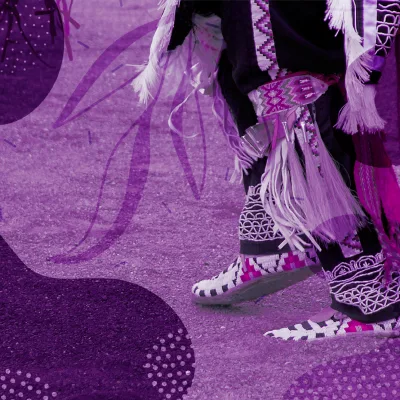
1991
Royal Commission on Aboriginal Peoples
- The Royal Commission on Aboriginal Peoples was established in 1991, as a component of federal government initiatives in response to the Kanesatake Resistance (Oka Crisis).
- The commission was tasked with examining the intricate dynamics among Indigenous Peoples, the Canadian government and Canadian society.
Source: The Canadian Encyclopedia. "Royal Commission on Aboriginal Peoples," January 11, 2021. Accessed January 11, 2024. https://www.thecanadianencyclopedia.ca/en/article/royal-commission-on-aboriginal-peoples
1995- 1996
Court Case against Alberta Government
- Leilani Muir initiated a court case against the Government of Alberta. Leilani Muir was sterilized without consent at a government run institution in Red Deer at the age of 14.
- Muir won the litigation and was awarded $740,000.
- This allowed other survivors of Forced and Coerced Sterilization to pursue legal action.
Source: Ha, Tu Thanh. “Leilani Muir Made History Suing Alberta over Forced Sterilization.” The Globe and Mail, March 16, 2016. https://www.theglobeandmail.com/news/alberta/woman-who-made-history-suing-alberta-over-forced-sterilization-dies/article29256421/.

1996
The Royal Commission on Aboriginal Peoples Final Report
- The Royal Commission on Aboriginal Peoples released its final report on November 21, 1996.
- The report concluded that there was a need to completely restructure the relationship between Indigenous Peoples and non-Indigenous people in Canada.
Source: The Canadian Encyclopedia. "Royal Commission on Aboriginal Peoples," January 11, 2021. Accessed January 11, 2024. https://www.thecanadianencyclopedia.ca/en/article/royal-commission-on-aboriginal-peoples
1998-1999
Legal Action against the Government of Alberta
- There were 246 individuals who sued the Government of Alberta for forced sterilizations.
- These individuals were awarded $82 million.
Source: CBC. “Alberta Apologizes for Forced Sterilization,” November 10, 1999. https://www.cbc.ca/news/canada....
1999
Provincial Apology
- Alberta Premier Ralph Klein issued an apology to the victims of the sterilization program in Alberta between 1928-1973.
- This apology did not refer to the Forced and Coerced Sterilization as a criminal act, due to the existence of the Alberta Sterilization Act.
Source: CBC. “Klein Apologizes for Forced Sterilizations,” November 2, 1999. https://www.cbc.ca/news/canada....
2005 - 2010
Sterilizations in Saskatchewan
- An external review of Saskatoon Health Region, the largest in the province of Saskatchewan documented that there were 16 Indigenous women coerced into sterilization immediately after giving birth.
- In 2010, Jackie Mann, the Vice President of the Integrated Health Services for the Saskatoon Health Region estimated that there were 94 tubal ligation procedures performed after birth on Indigenous women. This figure decreased to 20 by 2015.
Source:Boyer, Yvonne, and Judith Bartlett. “External Review: Tubal Ligation in the Saskatoon Health Region: The Lived Experience of Aboriginal Women.,” July 11, 2017.
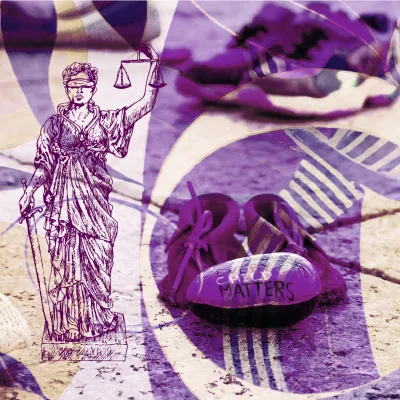
2006
Indian Residential Schools Settlement Agreement
- The Indian Residential School Settlement Agreement initiated on September 19, 2007, is a landmark consensus between stakeholders including former students and the legal representatives of the Churches, the Government of Canada, the Assembly of First Nations, and other Indigenous Organizations.
- This agreement included the following:
- Common Experience Payment for former Indian Residential School students.
- An Independent Assessment Process for claims of sexual or physical abuse.
- The establishment of the Truth and Reconciliation Commission.
- Measures to support healing which include support programs, endowments, and commemorative activities.
Source: Government of Canada. "Indian Residential Schools Settlement Agreement." Ottawa, 2006. https://www.rcaanc-cirnac.gc.ca/eng/1100100015576/1571581687074#sect1.
2007
The United Nations Declaration on the Rights of Indigenous Peoples
- The United Nations Declarations on Rights of Indigenous peoples was adopted by the UN General Assembly on September 21, 2007.
- The declaration recognizes and protects the individual and collective rights of Indigenous Peoples, while emphasizing their right to participate in self-determination, cultural integrity and to participate in decision-making processes that affect them.
- The declaration also calls for the promotion and protection of Indigenous culture, while aiming to address historical injustices and promote equality and respect for Indigenous Peoples throughout the world.
Source: United Nations General Assembly. "United Nations Declaration on the Rights of Indigenous Peoples." Resolution 61/295. Adopted on 13 September 2007. https://www.un.org/development....
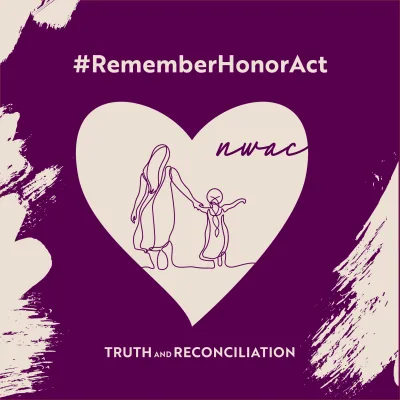
2008-2015
Truth and Reconciliation Commission
- The Truth and Reconciliation Commission was established in 2008, as a component of the Indian Residential Schools Settlement Agreement.
- The Commission aimed to address the injustices and abuses suffered by Indigenous peoples in Canada, especially within residential school systems.
- The mandate of the Truth and Reconciliation Commission involved documenting the experiences of survivors, holding public hearings across the country, and producing a comprehensive report with recommendations for reconciliation.
Source: National Centre for Truth and Reconciliation. "Truth and Reconciliation Commission of Canada,” 2024. Accessed January 11, 2024. https://nctr.ca/about/history-....
2015
The Truth and Reconciliation Commission of Canada Final Report
- The Truth and Reconciliation Commission of Canada released its final report entitled “Honouring the Truth, Reconciling for the Future,” consisting of several volumes.
- This report delved into the profound and lasting impact of the residential school system on Indigenous people.
- The report includes historical events, survivor testimonies and comprehensively details the policies and practices which led to this cultural genocide.
Source: Truth and Reconciliation Commission of Canada. "Honouring the Truth, Reconciling for the Future: Summary of the Final Report of the Truth and Reconciliation Commission of Canada." Winnipeg: Truth and Reconciliation Commission of Canada, 2015.

2015
The Truth and Reconciliation Commission of Canada Calls to Action
- The Truth and Reconciliation Commission of Canada releases their report entitled “Truth and Reconciliation Commission of Canada: Calls to Action.”
- This report outlines 94 recommendations aiming to address systemic injustices faced by Indigenous peoples in Canada.
- The recommendations cover various aspects including child welfare, education, language, culture, health, justice, and the rights of Indigenous Peoples.
- These recommendations have the overarching goal of promoting healing among the Indigenous peoples of Canada and fostering reconciliation between Indigenous and non-Indigenous Peoples.
Source: Truth and Reconciliation Commission of Canada. "Honouring the Truth, Reconciling for the Future: Summary of the Final Report of the Truth and Reconciliation Commission of Canada." Winnipeg: Truth and Reconciliation Commission of Canada, 2015
2017
Review on Coerced Sterilization in Saskatoon
- Findings of allegations of coerced tubal ligations at Saskatoon hospitals were published by Senator Yvonne Boyer and physician Judith Bartlett.
- This review outlined the experience of Indigenous women regarding being coerced into tubal ligation.
- Indigenous women who were pressured into sterilization felt invisible, profiled, and powerless. Indigenous women also reported negative impacts on their self-image and relationships.
Source: Boyer, Yvonne, and Judith Bartlett. “External Review: Tubal Ligation in the Saskatoon Health Region: The Lived Experience of Aboriginal Women.,” July 11, 2017.
2017
Class Action Lawsuit in Saskatchewan
A class action lawsuit was initiated in October which reported that 60 Indigenous women experienced forced and coerced sterilizations at publicly funded administered hospitals in Saskatchewan.
Source: NPR. “Indigenous Women in Canada File Class-Action Suit over Forced Sterilization.” NPR, November 19, 2018. https://www.npr.org/2018/11/19....

2018
Indigenous Women Alleging Forced and Coerced Sterilization
- More than 100 Indigenous women from Saskatchewan, Alberta, British Columbia, Manitoba, and Ontario alleged they were sterilized without free and informed consent.
Source: Amnesty International. “RIDR, Briefs, Amnesty International Submission to Standing Senate Committee on Human Rights Study on Sterilization Without Consent, Submitted by Amnesty International, 5 April 2019.,” April 1, 2019.
2018
Class Action Lawsuit in Alberta
- A class action lawsuit was filed against the Government of Alberta on behalf of Indigenous women who were subjected to Forced and Coerced sterilization before December 14, 2018.
- The lawsuit seeks a total of $500 million in damages and $50 million in punitive damages.
Source: Kirkup, Kristy. “Class Action Lawsuit Proposed on Coerced Sterilization in Alberta.” CBC, December 20, 2018. https://www.cbc.ca/news/canada....
2018
7th Periodic Report of Canada
- The 7th Periodic Report of Canada under the Convention against Torture and Other Cruel, Inhuman or Degrading Treatment or Punishment was released.
- This report mentioned the Forced and Coerced Sterilization of Indigenous women.
Source: UN. Committee against Torture (65th sess.:2018:Geneva). “Concluding Observations on the 7th Periodic Report of Canada: Committee against Torture.” United Nations Digital Library System, December 21, 2018. https://digitallibrary.un.org/....
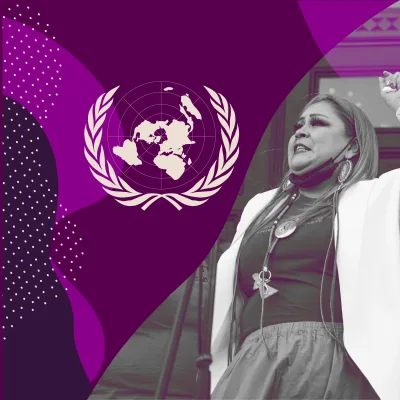
2018
United Nations Committee against Torture Response
- The United Nations Committee against Torture expressed concern over the reports of Forced and Coerced Sterilization of Indigenous women and girls.
- The United Nations Committee made the following recommendations:
- Any allegations of Forced and Coerced Sterilization are fairly investigated.
- The responsible individuals should be held accountable with adequate reparation given to the affected individuals.
- Legislations and policies should be adopted to prevent and criminalize the Forced and Coerced Sterilization of Indigenous women.
- The requirement of informed consent should be clearly defined for sterilization.
Source: Government of Canada, Public Services and Procurement Canada, Integrated Services Branch, Government Information Services, Publishing and Depository Services. “The Scars That We Carry: Forced and Coerced Sterilization of Persons in Canada. Part II / Standing Senate Committee on Human Rights; the Honourable Salma Ataullahjan, Chair, the Honourable Wanda Thomas Bernard, Deputy Chair.: YC32-0/441-4E-PDF - Government of Canada Publications - Canada.Ca,” April 3, 2013. https://publications.gc.ca/sit....
2019
Inter-American Commission on Human Rights
- Concerns were presented by the Inter-American Commission on Human Rights and United Nations Special Rapporteurs after a visit to Canada.
- The Inter-American Commission on Human Rights released a statement urging Canada “to guarantee effective access to justice for survivors and their families, to conduct impartial and immediate investigations, to hold those responsible to account and to take all of the necessary measures to put an end to the practice of sterilizing women against their will.”
2019
Letter from Bill Casey
- Mr. Bill Casey, Member of Parliament (Chair of House of Commons Standing Committee on Health) writes a letter on Friday, August 2, 2019, to Honourable Ginette Petitpas Taylor, P.C., M.P. Minister of Health, Honourable Seamus O’Regan, P.C., M.P. Minister of Indigenous Services and Honourable Ralph Goodale, P.C., M.P. Minister of Public Safety and Emergency Preparedness.
- The letter on behalf of the House of Commons Standing Committee on Health urged the Government of Canada to address the Forced and Coerced Sterilization in Canada.
Source: Casey, Bill. “Understanding the Full Scope of Forced Sterilization of Women in Canada.” Standing Committee on Health, August 2, 2019.

2020
Native Women’s Association of Canada Toolkit
- The Native Women’s Association of Canada develops and releases the “Knowing Your Rights Toolkit: Sexual and Reproductive Health Booklet.”
Source: Native Women’s Association of Canada. “Forced Sterilization | Native Women’s Association of Canada (NWAC),” 2024. https://nwac.ca/policy/forced-....
2021
Allegations of Forced Birth Control
- Breen Ouellette, a Métis lawyer, brought forth allegations stating that social workers in British Columbia have been forcing Indigenous girls, some younger than 10 years old, to have Intrauterine Devices (IUDs) inserted.
- The allegations further state that these Indigenous children did not have any follow-up care after the insertion of the IUDs.
- B.C.’s Representative for Children and Youth stated that they were not aware of any reports corroborating this but would further follow-up.
Source: MacMahon, M. “Claims B.C. Indigenous girls forcibly given IUD birth control shock youth advocate,” 2021. Vancouver City News. Accessed January 12, 2024. https://vancouver.citynews.ca/...
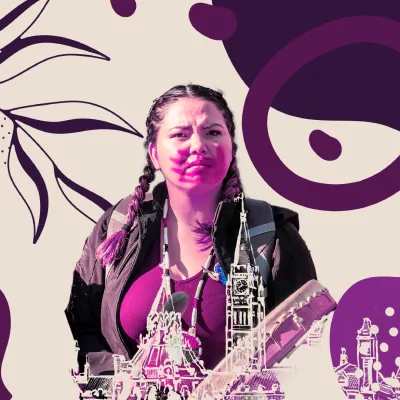
2021
Forced and Coerced Sterilization of Persons in Canada Report
- Release of report entitled “Forced and Coerced Sterilization of Persons in Canada” by the Senate Committee on Human Rights.
- The report outlines the findings of the Senate Committee’s preliminary study conducted in 2019 into the history of Forced and Coerced Sterilization in Canada.
- The Senate Committee on Human Rights recommended that there be further investigation into the prevention of Forced and Coerced Sterilization and a timely response to the report from the Government of Canada.
Source: Government of Canada, Public Services and Procurement Canada, Integrated Services Branch, Government Information Services, Publishing and Depository Services. “Forced and Coerced Sterilization of Persons in Canada / Standing Senate Committee on Human Rights; the Honourable Salma Ataullahjan, Chair, the Honourable Wanda Elaine Thomas Bernard, Deputy Chair, the Honourable Nancy J. Hartling, Deputy Chair.: YC32-0/432-3E-PDF - Government of Canada Publications - Canada.Ca,” April 3, 2013. https://publications.gc.ca/sit....
2022 June 14
First Reading of Bill S-250
- Senator Yvonne Boyer initiates the first stage of a bill introduced to Parliament, by completing the first reading of Bill S-250.
- This bill proposes amendments to the Criminal Code, wherein the act of Forced and Coerced Sterilization would fall under the category of assault in the Criminal Code in Canada.
- Under this category, everyone who causes or attempts an individual to undergo Forced and Coerced Sterilization would be guilty of an indictable offence. This offence would be punishable by up to 14 years in prison.
Source “: Public Bill (Senate) S-250 (44-1) - First Reading - An Act to Amend the Criminal Code (Sterilization Procedures) - Parliament of Canada,” June 14, 2022. https://www.parl.ca/DocumentVi....
2022 July 14
Persons in Canada – Part II
- This report is the extension of the 2021 Forced and Coerced Sterilization of Persons in Canada by the Senate Committee on Human Rights.
- The Senate Committee on Human Rights acknowledged that they were aware of reports of Forced and Coerced Sterilization still occurring until 2019.
- The report included testimony from survivors, experts, and other organizations (civil or society).
- This report provided a multitude of recommendations urgently needed to stop the practice of Forced and Coerced Sterilization.
Source: “The Scars That We Carry: Forced and Coerced Sterilization of Persons in Canada. Part II / Standing Senate Committee on Human Rights; the Honourable Salma Ataullahjan, Chair, the Honourable Wanda Thomas Bernard, Deputy Chair.: YC32-0/441-4E-PDF - Government of Canada Publications - Canada.Ca,” April 3, 2013. https://publications.gc.ca/sit...

2022 July 22
The Canadian Medical Association Statement
- The Canadian Medical Association released a statement denouncing Forced and Coerced Sterilization, in response to the Scars that We Carry: Forced and Coerced Sterilization of Persons in Canada – Part II.
- This statement acknowledged the link between racism, discrimination and Forced and Coerced Sterilization which targets vulnerable populations including Indigenous people.
Source: Canadian Medical Association. “CMA Condemns Forced and Coerced Sterilization,” July 22, 2022. https://www.cma.ca/about-us/wh....
2022 Nov
Quebec Report on Forced and Coerced Sterilization
- In November 2022, a report was released entitled, “Free and informed consent and imposed sterilizations among First Nations and Inuit women in Quebec.”
- This report outlined the testimonies of 35 women who experienced or witnessed acts of obstetric violence, imposed abortions and or Forced and Coerced Sterilization between 1980 to 2019 (14 Atikamekw, 10 Innu, 5 Anishinabe, 4 Eeyou, and 2 Inuit).
- Although this report outlines 35 testimonies, there were many individuals who did not participate indicating a much higher number of individuals who experienced these atrocities.
- The testimonies in the report described the:
- Undermining of patient’s free and informed consent.
- Fear, distrust, and avoidance of health services.
- Differences in treatment for Indigenous peoples in hospitals.
- Patient characteristics and circumstances of their sterilizations.
Source: CSSSPNQL. “Free and Informed Consent and Imposed Sterilizations among First Nations and Inuit Women in Quebec - CSSSPNQL,” December 19, 2022. https://cssspnql.com/en/produi....
2023
Lawsuit Against Dr. Andrew Kotaska
- A Tuktoyaktuk women brings allegations forward that Dr. Andrew Kotaska sterilized her without her informed consent in the Northwest Territories in 2019.
- The woman is seeking $ 1 million in punitive damages from Dr. Kotaska and a further $ 5 million from the Northwest Territories Health and Social Services Authority.
- Although the allegations have not been proven in court, investigations resulted in Dr. Kotaska’s being ordered to take an ethics course, reimburse the cost of the investigation, and have his medical licence suspended for five months.
Source: Zingel, Avery. “Tuktoyaktuk Woman Files $6M Lawsuit Claiming N.W.T. Doctor Sterilized Her without Consent.” CBC, March 10, 2022. https://www.cbc.ca/news/canada....
2023 April 20
Second Reading of Bill S-250
- The second reading of Bill S-250 provided the opportunity to debate the scope of the bill.
- Bill S-250 is now being considered by the Standing Senate Committee on Legal and Constitutional Affairs. Afterwards it must go through further legislative steps in the House of Commons.
Source: LEGISinfo. “S-250 (44-1) - LEGISinfo - Parliament of Canada,” April 20, 2023. https://www.parl.ca/legisinfo/....

2023 Aug 21
Authorization of Class-Action Lawsuit
- The Superior Court of Quebec authorizes a class-action lawsuit brought by Atikamekw women who experienced Forced and Coerced Sterilization since the 1980’s.
- The lawsuit is demanding damages from three doctors (R.M, Y.B, and M.T) and an integrated health and social services centre in Quebec.